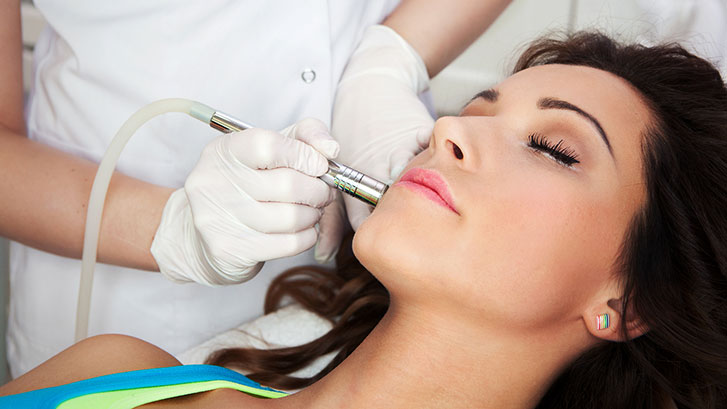Skin Pigmentation Changes: What are the Causes?
What Causes Skin Pigmentation to Change?
Aging affects our minds and bodies in a myriad of ways; some of these changes are monumental, but others are literally skin-deep. Over the years, our skin pigmentation naturally changes. These shifts may be merely superficial and aesthetic, but other permutations can be indicative of deeper health problems. The more you understand your skin tone, the better equipped you’ll be to fend off Father Time.
Sun
Sun exposure is the primary cause of pigmentation alteration. Unless you live underground, you can’t escape the rays of our closest star, nor would you want to. The sun provides us with much needed Vitamin D, which is absorbed through the skin and helps maintain the health of the skeletal system, various organs, and cell cycles. In small doses, the sun produces a gorgeous tan and cute freckles, but the long-term effects are less desirable. Sun exposure can cause the development of dark spots and keratosis, which can develop into skin cancer. A staggering 80% of instances of skin cancer appear on the face, head or neck; these are the exact areas that endure the most sun exposure. Skin cancer has serious implications for both your health and your appearance.
Skin Damage/Scar Tissue
A skinned knee might be nothing to cry about, but repetitive and persistent skin damage can have a permanent effect on your overall pigmentation landscape. We all suffer the occasional scrape, cut, pimple, or abrasion; these are the marks of a life fully lived. How we treat these injuries, however, ripples across our complexion for years to come. Scar tissue causes a lack of pigmentation, so the treatment of a wound is vitally important to minimize the damage before it sets in. Disinfecting a cut prevents infection and further complications; antibacterial salve is the front-line soldier in your war against scar tissue and further skin damage.
Disorders
In addition to sun exposure and skin damage, there are several disorders that can cause changes in the pigmentation of our skin, either permanently or temporarily. Some afflictions only affect your skin tone, but other changes in pigmentation are warning signs of a more insidious health issue. The skin is the largest organ in the human body; when it speaks, you should listen. Contact a doctor if you experience any unusual, unexpected, or unexplained changes in the pigmentation of your skin.
Melasma
Pregnant women undergo massive hormonal changes that often manifest themselves in skin tone transformations. This “mask of pregnancy” is clinically known as Melasma, aka chloasma. It’s a hyperpigmentation of the skin characterized by the development of brown epidermal splotches, particularly in the facial area. For some women these spots fade after pregnancy, but for others, the change in pigmentation is permanent. Men can also experience Melasma, though it is much less common for men than women. The condition can be treated with prescription creams or cosmetic treatments. Sun exposure can exacerbate this condition, so those who experience it should exercise extra precaution to avoid overexposure to UV rays.
Addison’s Disease
Addison’s disease, a disorder characterized by an underactive adrenal gland, is another (yet more rare) cause of hyperpigmentation. This disease is a serious health condition that can lead to impaired kidney function and dangerously low blood pressure. With proper treatment, however, most people with Addison’s disease are able to live a normal life. Addison’s disease affects only 1 in 100,000 people, but can strike at any age. One side effect of Addison’s disease is the development of dark splotches and freckles. These can appear anywhere on the body, including the gums, but are most common on places that get frequent sun exposure, like the face and hands.
Vitiligo
Vitiligo is distinct from the aforementioned disorders in that it causes hypopigmentation, or the loss of pigmentation, rather than hyperpigmentation. Vitiligo is an autoimmune disease that causes white patches to appear across the body and/or face due to damage to the pigment-producing cells. Vitiligo cannot be cured, but the spots can be treated with laser treatments and corticosteroid creams.
Albinism
Our skin, hair, and even eyes are given their signature tone from melanin, a pigmentation agent produced by most human bodies. In rare cases of albinism, however, those affected produce little to no melanin. This may give skin a pale hue and make skin even more sensitive to the harmful effects of sunlight than most people. Albinism can undergo a subtle shift during the teen years, when pigmentation sometimes increases, but other cases never result in the melanin production present in the average human body.
Just as some ailments can cause changes in the skin, so can some treatments, such as certain antibiotics, antiarrhythmics, and antimalarial drugs, which can all cause hyperpigmentation.
Correcting Pigmentation Changes
Changes in skin color can be frustrating and visually unappealing, even if they aren’t associated with a larger issue. Fortunately, a cosmetic surgeon skilled in cosmetic skin treatments can help to minimize or even eliminate the appearance of discoloration.
Dr. William J. Binder is located in Los Angeles, but he is known the world over as one of the industry’s leading plastic surgeons. He has the skill and resources to not only evaluate and treat your pigmentation changes, but to make the process as easy and stress-free as possible. If you’re sick of living with skin discoloration, contact Dr. Binder’s office today to schedule a consultation.

